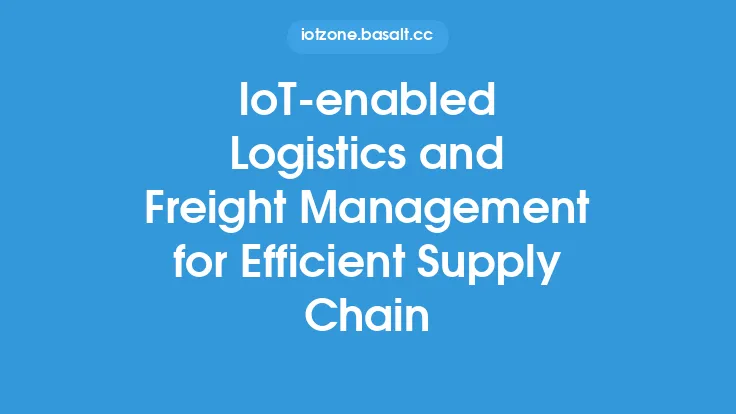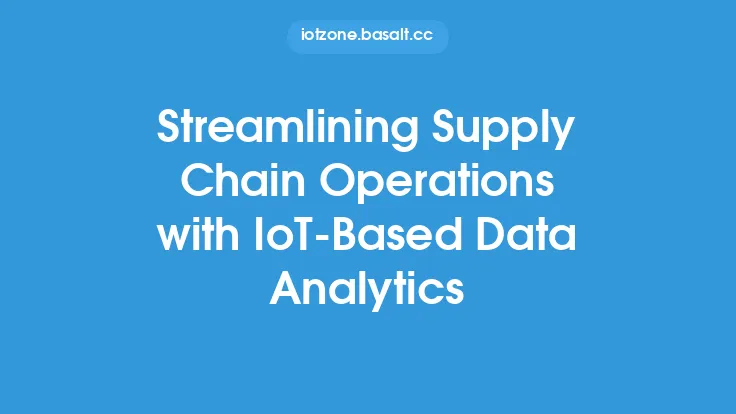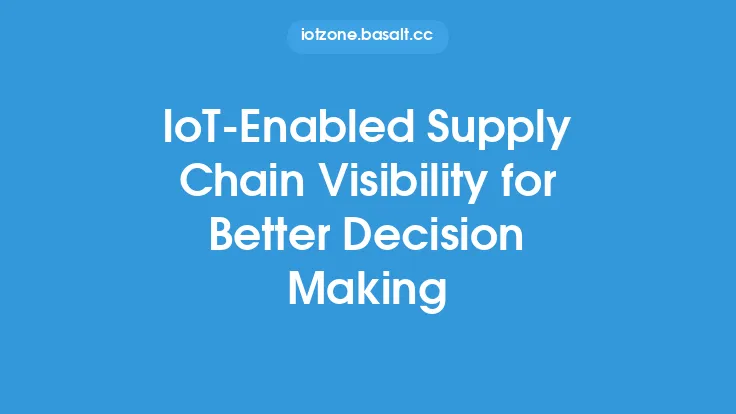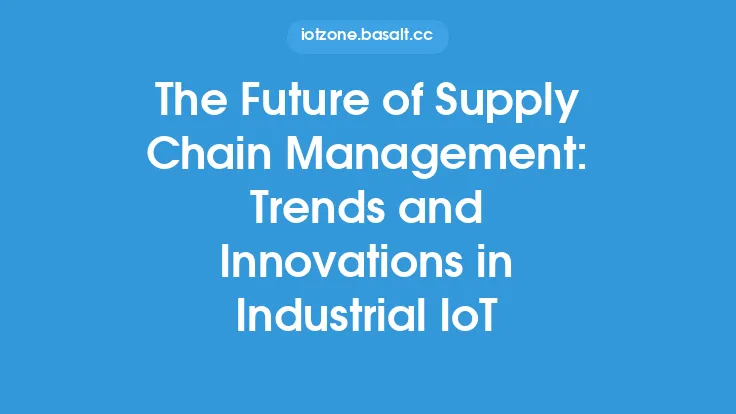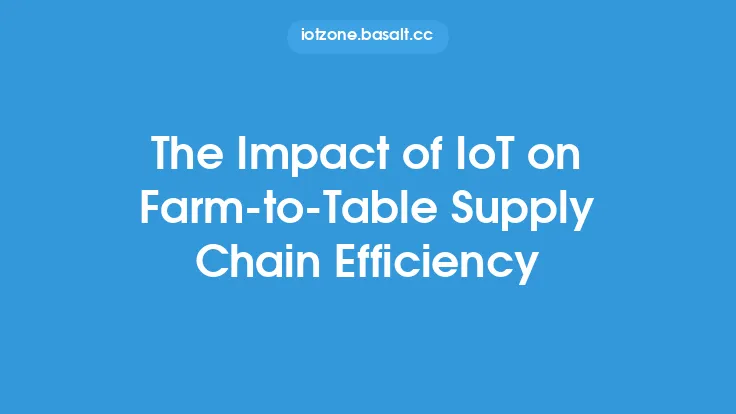The increasing demand for faster and more efficient delivery of goods has led to a significant shift in the way companies approach supply chain management. One key factor driving this change is the integration of Internet of Things (IoT) technology into logistics operations. By leveraging IoT-driven logistics, businesses can streamline their supply chains, reduce costs, and improve customer satisfaction. In this article, we will explore the ways in which IoT is improving supply chain efficiency and the benefits that come with it.
Introduction to IoT-Driven Logistics
IoT-driven logistics involves the use of IoT devices and sensors to track and monitor goods as they move through the supply chain. This can include everything from tracking the location and condition of shipments in real-time to monitoring the performance of logistics equipment and vehicles. By providing real-time visibility into logistics operations, IoT technology enables companies to make data-driven decisions and optimize their supply chains for maximum efficiency. Some of the key technologies used in IoT-driven logistics include GPS tracking, RFID tags, and cellular connectivity.
Benefits of IoT-Driven Logistics
The benefits of IoT-driven logistics are numerous and can have a significant impact on a company's bottom line. Some of the most significant advantages include:
- Improved supply chain visibility: With IoT technology, companies can track their goods in real-time, reducing the risk of lost or stolen shipments and enabling them to respond quickly to any disruptions or issues that may arise.
- Increased efficiency: By optimizing logistics operations and reducing transit times, companies can get their products to market faster and more efficiently, improving customer satisfaction and reducing costs.
- Enhanced security: IoT technology can be used to monitor the condition and location of shipments, reducing the risk of theft or damage and enabling companies to take proactive steps to prevent these types of incidents.
- Better decision-making: With access to real-time data and analytics, companies can make informed decisions about their logistics operations, optimizing their supply chains for maximum efficiency and reducing costs.
Key Technologies Used in IoT-Driven Logistics
Several key technologies are used in IoT-driven logistics, including:
- GPS tracking: This technology enables companies to track the location of their shipments in real-time, providing valuable insights into logistics operations and enabling them to respond quickly to any disruptions or issues that may arise.
- RFID tags: These tags can be used to track the location and condition of shipments, providing real-time visibility into logistics operations and enabling companies to optimize their supply chains for maximum efficiency.
- Cellular connectivity: This technology enables IoT devices to communicate with the cloud and other devices, providing real-time visibility into logistics operations and enabling companies to make data-driven decisions.
- Sensors: These devices can be used to monitor the condition of shipments, including temperature, humidity, and vibration, enabling companies to take proactive steps to prevent damage or spoilage.
Implementing IoT-Driven Logistics
Implementing IoT-driven logistics requires a significant investment of time and resources, but the benefits can be substantial. Some of the key steps involved in implementing IoT-driven logistics include:
- Assessing logistics operations: This involves evaluating current logistics operations and identifying areas for improvement.
- Selecting IoT technologies: This involves choosing the IoT technologies that best meet the needs of the company, including GPS tracking, RFID tags, and cellular connectivity.
- Integrating IoT technologies: This involves integrating IoT technologies into existing logistics systems, including transportation management systems and warehouse management systems.
- Analyzing data: This involves analyzing the data generated by IoT technologies to identify trends and patterns and optimize logistics operations.
Challenges and Limitations of IoT-Driven Logistics
While IoT-driven logistics offers many benefits, there are also several challenges and limitations to consider. Some of the most significant include:
- Cost: Implementing IoT-driven logistics can be expensive, particularly for small and medium-sized businesses.
- Complexity: IoT technology can be complex and difficult to integrate into existing logistics systems.
- Security: IoT devices and sensors can be vulnerable to cyber threats, which can compromise the security of logistics operations.
- Data overload: The large amounts of data generated by IoT technologies can be overwhelming, making it difficult to analyze and act on the insights provided.
Best Practices for Implementing IoT-Driven Logistics
To get the most out of IoT-driven logistics, companies should follow several best practices, including:
- Start small: Begin by implementing IoT technology in a small area of logistics operations and gradually scale up to other areas.
- Choose the right technology: Select IoT technologies that meet the specific needs of the company and are compatible with existing logistics systems.
- Integrate with existing systems: Integrate IoT technologies with existing logistics systems, including transportation management systems and warehouse management systems.
- Analyze data: Regularly analyze the data generated by IoT technologies to identify trends and patterns and optimize logistics operations.
Conclusion
IoT-driven logistics is a powerful tool for improving supply chain efficiency and reducing costs. By providing real-time visibility into logistics operations, IoT technology enables companies to make data-driven decisions and optimize their supply chains for maximum efficiency. While there are several challenges and limitations to consider, the benefits of IoT-driven logistics make it an essential investment for any company looking to stay competitive in today's fast-paced logistics landscape. By following best practices and selecting the right IoT technologies, companies can get the most out of IoT-driven logistics and achieve significant improvements in supply chain efficiency.
